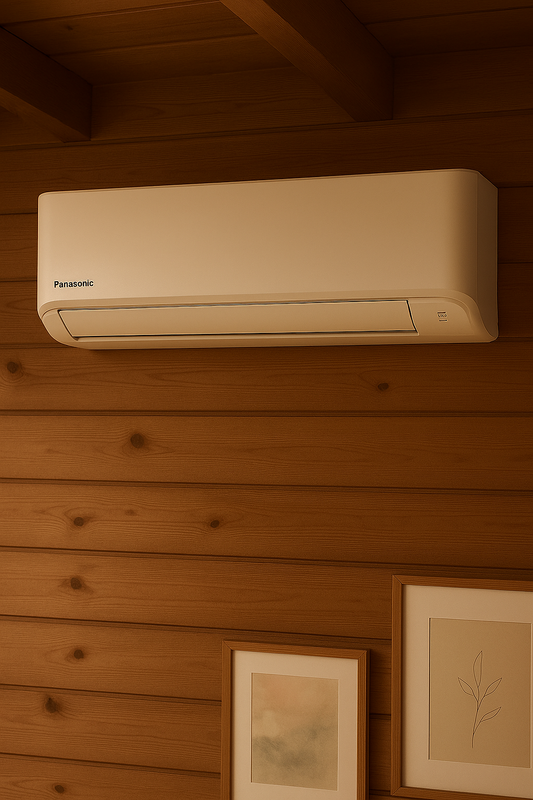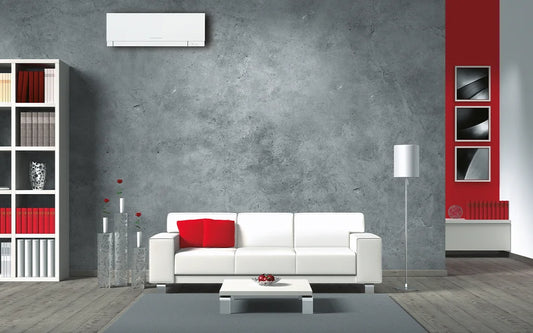Pris för att installera en luftvärmepump
Att installera en luftvärmepump är en kostnadseffektiv och miljövänlig lösning för uppvärmning och kylning av bostäder och kommersiella fastigheter. I denna artikel kommer vi att utforska kostnaderna för att installera en luftvärmepump, dess fördelar, användningsområden samt vanliga frågor kring ämnet.
Definition och Bakgrund
En luftvärmepump är ett system som använder sig av utomhusluften för att producera värme inomhus under vintermånaderna och kyla inomhus under sommarmånaderna. Den består av en inomhusenhet och en utomhusenhet som är sammanlänkade genom ett kylmedel. Genom att utnyttja värmeenergin i utomhusluften kan luftvärmepumpen effektivt värma upp eller kyla ner byggnader.
Fördelar och Användningsområden
En av de främsta fördelarna med luftvärmepumpar är deras höga energieffektivitet. De kan producera flera gånger mer värmeenergi än den elektricitet de förbrukar, vilket resulterar i lägre energikostnader för användarna. Dessutom minskar de även koldioxidutsläppen jämfört med traditionella uppvärmningssystem.
Luftvärmepumpar kan användas för att värma eller kyla enstaka rum, hela hus eller kommersiella fastigheter. De är särskilt användbara i områden med måttliga klimatförhållanden där behovet av intensiv uppvärmning eller kylning är begränsat.
Relaterade Tekniker, Begrepp eller Variationer
Det finns olika typer av luftvärmepumpar, inklusive luft-luftvärmepumpar, luft-vattenvärmepumpar och luft-luft-vattenvärmepumpar. Dessa varianter skiljer sig åt i hur de distribuerar energin till byggnader och kan vara mer lämpade för olika typer av fastigheter eller klimatförhållanden.
Vanliga Frågor (FAQ)
-
Vad påverkar kostnaden för att installera en luftvärmepump?
Kostnaden för installation beror på faktorer som fastighetens storlek, val av luftvärmepumpsmodell, installationsplats och eventuella förberedande arbeten som behöver utföras. -
Vilka underhållskrav finns det för en luftvärmepump?
Luftvärmepumpar kräver regelbunden rengöring och underhåll för att bibehålla sin effektivitet. Det är också viktigt att regelbundet kontrollera kylmedelnivåerna och utföra service av professionella tekniker. -
Vad är den genomsnittliga livslängden för en luftvärmepump?
Med regelbunden underhåll kan en luftvärmepump ha en livslängd på cirka 15 år. Efter denna tid kan dess prestanda och energieffektivitet minska.
Sammanfattning
Att installera en luftvärmepump kan vara en investering med långsiktiga fördelar såsom lägre energikostnader och minskad miljöpåverkan. Genom att förstå kostnaderna för installation, fördelarna och användningsområdena för luftvärmepumpar samt de vanligaste frågorna kring ämnet, kan fastighetsägare fatta välgrundade beslut när det gäller uppvärmning och kylning av sina byggnader.
Installation Process
The installation process for a air source heat pump typically involves several steps. Firstly, the location for the outdoor unit needs to be determined, taking into account factors such as sun exposure, noise considerations, and sufficient airflow. Then, the indoor unit is installed, typically in a utility room or other suitable indoor space. Refrigerant lines and electrical wiring are then connected between the indoor and outdoor units. Finally, the system is tested to ensure proper operation.
Cost Considerations
When considering the cost of installing an air source heat pump, it's important to factor in not only the initial purchase and installation costs, but also the long-term savings in energy bills. Additionally, incentives, rebates, and tax credits may be available in some regions to offset the initial investment.
Environmental Impact
One of the key benefits of air source heat pumps is their reduced environmental impact compared to traditional heating and cooling systems. By utilizing renewable heat sources, such as ambient air, these systems can help reduce greenhouse gas emissions and decrease reliance on non-renewable energy sources.
Case Study: Residential Installation
In a residential setting, the installation of an air source heat pump can result in significant energy savings. For example, a homeowner in a moderate climate may see a reduction in heating and cooling costs, as well as an improvement in indoor comfort, after installing an air source heat pump.
Conclusion
As the demand for energy-efficient and environmentally friendly heating and cooling solutions continues to grow, air source heat pumps are becoming an increasingly popular choice for residential and commercial properties. Understanding the installation process, cost considerations, environmental impact, and real-world applications of air source heat pumps can empower property owners to make informed decisions about their heating and cooling systems.
Energy Efficiency
One of the key advantages of air source heat pumps is their high energy efficiency. They can produce several times more heat energy than the electricity they consume, resulting in lower energy costs for users. This is particularly beneficial for households and businesses looking to reduce their carbon footprint and energy expenses.
Regulatory Considerations
Before installing an air source heat pump, it's important to consider local regulations and building codes. Certain jurisdictions may have specific requirements or restrictions related to the installation and operation of heat pump systems. Compliance with these regulations is essential to ensure a smooth and legal installation process.
Noise Levels
While air source heat pumps are generally quieter than traditional HVAC systems, it's important to consider potential noise levels, especially for residential installations. Choosing the right location for the outdoor unit and selecting a model with low noise emissions can help minimize any potential disturbances.
Financial Incentives
Many governments and utility companies offer financial incentives, such as rebates and grants, to encourage the adoption of energy-efficient heating and cooling systems like air source heat pumps. These incentives can significantly offset the upfront costs of installation and make the transition to a heat pump more financially viable for property owners.
Real-World Examples
Case studies and real-world examples of air source heat pump installations can provide valuable insights into the actual performance and benefits of these systems. By examining successful implementations in similar settings, property owners can gain confidence in the potential outcomes of their own installations.
Long-Term Maintenance
Proper maintenance is essential for maximizing the lifespan and efficiency of air source heat pumps. Regular inspection, cleaning, and servicing can help prevent malfunctions and ensure optimal performance throughout the system's operational life. Property owners should consider the long-term maintenance requirements when evaluating the overall cost of ownership.





